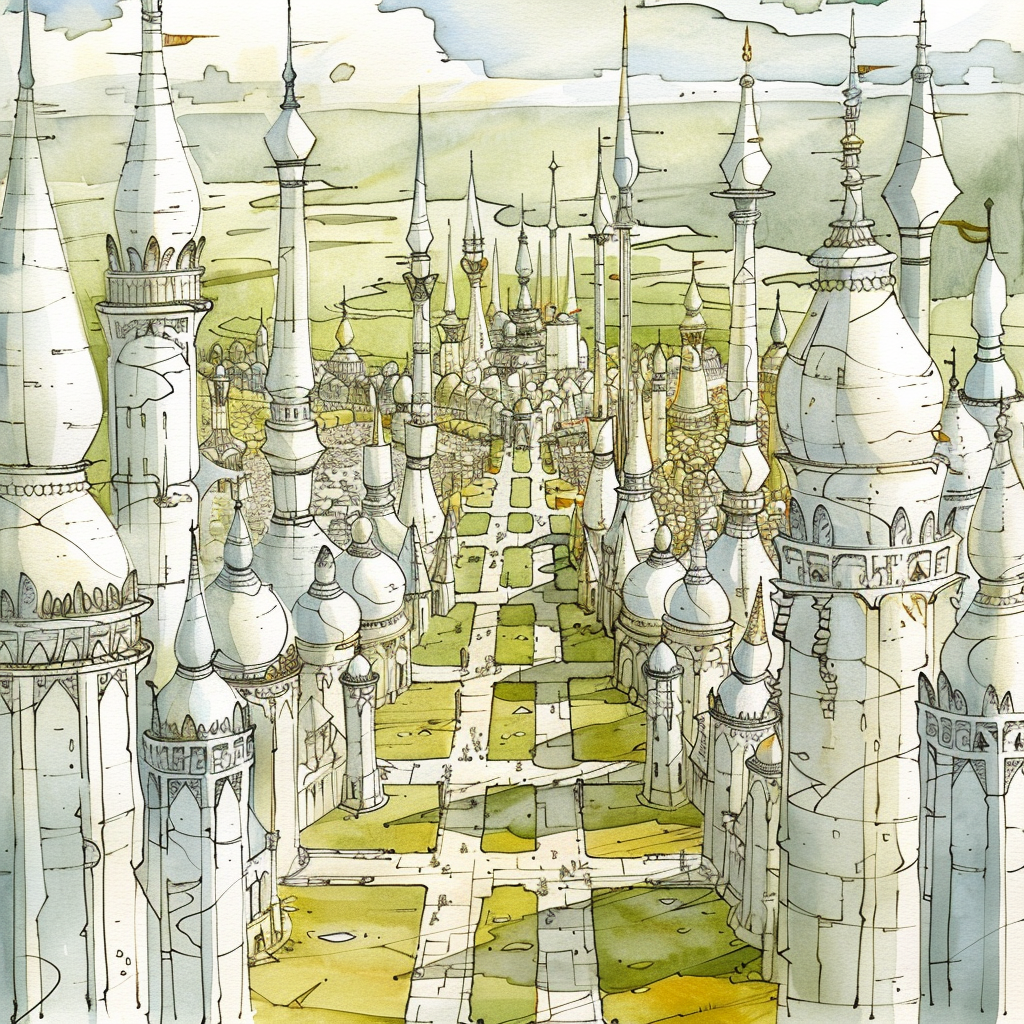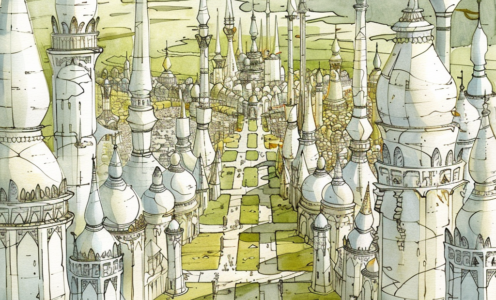[ Arcadia ] [ Abellio | Buxenus | Nemausus ]
Buxenus
Arcadia — Layer the Second
The Peaceable Kingdoms
Themes of the Layer: Political Utopia, Birthplace of Civilisation, Defence of the Upper Planes
Buxenus represents the first line of defence of the Upper Planes against the ravages of the Blood War, and the goblinoid hordes. Its people believe that a strong offense is the best defence, and the Marches of Buxenus are frequently filled with warriors being drilled in combat. The warriors of Buxenus are self-sacrificing bloods, prepared to put their lives (or afterlives) on the line to defend the peace and tranquility of Abellio, the second layer of Arcadia.
Buxenus represents the taming of the environment for the benefit of society. There are numerous city states which are spread regularly across the layer, each espousing an ideal form of civilized government. These city nations are proud and often assertive about their particular brand of politics. Neighbouring states often come to blows over philosophical differences, which in the extreme can result in civil war. This kind of combat will appear unusual to outsiders, as frequent breaks are called in the fighting so that the injured can be removed from the battlefield and tended to. This conflict serves to settle scores between city states, but also to identify the strengths and weaknesses in and hone the battle skills of Buxeni armies. For when Arcadia is threatened by external forces, the city states always unite together to repel the threat, no matter their internal beef.
The formians are masters of taming the wilderness for the benefit of society. They have built machines to harness the energy of the storms, and extract fuels from the ground. Buxenus is the flipside of peaceable Abellio, a plane prepared for righteous war, the often-polluted and dirty secret of Arcadia. Buxenus is the real reason that Abellio has not been overrun by the Lower Planes or the mechanicals. To defeat the threat, one must sometimes embrace it.
Vistas of Buxenus
Hills, Mountain, Roads and Canals: The physical form of the plane is terrain that varies from undulating foothills to conical mountains, criss-crossed by paved roads and tracks which seem to lead from every major site to every other. The roads are laid out straight as an arrow, going up and over hills when required, or diving into tunnels through mountains. There are also plenty of canals, which are also straight, carried by viaducts with the most impressive arches, when required to cross valleys.
Beings of Buxenus: Formians, petitioners, Harmonium, einheriar troops, some archons and aasimon
Ruler: There is no single ruler of Buxenus, instead a Council of Kings meets to debate threats to the plane. Each city state sends its ruler or representative, depending upon the form of government that the burg favours.
Locations of Buxenus
- Abundant Living (independent burg)
- Azuth (realm of Azuth)
- Mage’s Rest (realm town)
- Circle of Eternal Obelisks (site)
- Eye, the (realm of Savras the All-Seeing)
- Hand of Peace (realm of Meriadar)
- Harmonium Training Camps (sites)
- Heliopolis (realm of Ra, Isis, Horus & Osiris)
- Thekele-re (realm of Ra)
- Manjet’s Mooring Ground
- Manu, Hill of Sunrises
- Three Pyramids of the Sun
- Gizekhtet (realm of Isis)
- Temple of Knowledge (site)
- Temple of Magic (site)
- Temple of Matrimony (site)
- Memphiria (realm of Osiris)
- Sepulchre of Osiris (site)
- Temple of Mummification (site)
- Walk of Chills and Mausoleum of Kings (site)
- Nekhbet’s Sanctuary (realm of Eileithiya)
- Thekele-re (realm of Ra)
- Klictrik (formian hive-city)
- Melodia (Harmonium burg)
- Palace of Storms (realm of Anath and Baal)
- River Eridanus (planar pathway)
- Zeta Eridani (independent burg)
Powers of Buxenus
- Aengrist (power of protection)
- Anath (power of fertility)
- Astraea (Greek power of justice)
- Azuth (Faerunian power of wizards)
- Baal (power of storms)
- Eileithyia (Greek power of childbirth)
- Horus (Egyptian power of the nobility)
- Isis (Egyptian power of magic)
- Kundo (Touv power of building)
- Meriadar (Mongrelfolk power of patience)
- Osiris (Egyptian power of the underworld)
- Parvati-Durga (Vedic power of love and war)
- Ra (Egyptian power of the sun)
- Savras the All-Seeing (Faerunian power of divination)
Philosophies of Buxenus
- Harmonium
- Shepherds of Arcadia
More details to follow!
Source: Jon Winter-Holt


